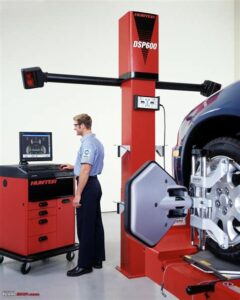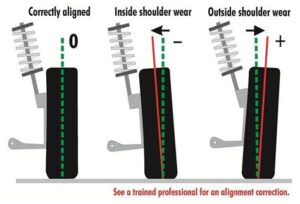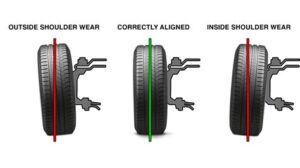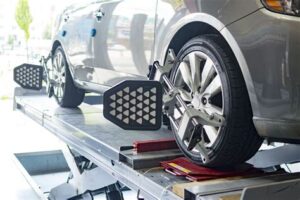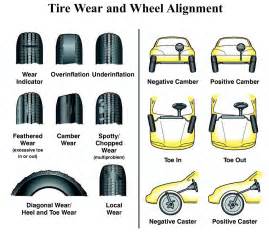When your car continues to pull to one side even after a professional wheel alignment, it can be both frustrating and concerning. Understanding the common causes behind this issue is essential for ensuring a safe and smooth driving experience. Wheel alignment plays a critical role in maintaining straight handling and even tire wear, yet there are various factors that can lead to persistent pulling. In this article, we will explore the common reasons your vehicle may still drift after an alignment, how to properly diagnose the problem, and the necessary steps to take. Whether you’re experiencing this issue for the first time or looking to enhance your driving safety, our comprehensive guide will provide you with the insights needed to tackle this perplexing automotive challenge.
Common Causes Of A Car Still Pulling After Alignment
When your car still pulls after alignment, it can be frustrating and concerning. Identifying the underlying issues is crucial for a safe and comfortable driving experience. Here are some common causes you should consider:
- Uneven Tire Pressure: Inconsistent tire pressure can lead to pulling. Ensure all tires are inflated to the recommended levels.
- Tire Wear: Worn or damaged tires can cause your vehicle to pull to one side. Regularly check your tire tread and condition.
- Suspension Problems: Issues with suspension components like struts, shocks, or springs can lead to pulling. A thorough inspection may be necessary.
- Steering System Issues: Problems with the steering mechanism, such as worn tie rods or a damaged steering rack, can also be a factor.
- Brake Problems: A stuck caliper or uneven brake wear can cause pulling, particularly when braking. Always examine your brake components if experiencing this issue.
- Previous Damage: If your vehicle has been in an accident or has sustained damage to the frame, it may not align properly.
- Alignment Equipment Error: Sometimes, the equipment used for alignment can be faulty or not calibrated correctly, leading to an inaccurate outcome.
- Incorrect Alignment Settings: If the alignment specifications are not matched to the manufacturer’s guidelines, this can contribute to continued steering issues.
Addressing these potential causes promptly can help prevent further complications and ensure your vehicle drives straight and true.
Understanding Wheel Alignment And Its Importance For A Straight Drive
Wheel alignment is a crucial aspect of vehicle maintenance that involves adjusting the angles of the wheels to ensure they are positioned correctly relative to each other and the road. Proper car still alignment ensures that all four wheels are parallel and perpendicular to the ground, which significantly impacts your car’s handling, tire wear, and overall safety.
When your wheels are aligned correctly, they work together optimally, allowing for a smoother ride and reducing the strain on your suspension system. Misalignment can lead to several issues, including uneven tire wear, poor steering response, and a car that pulls to one side, even after an alignment service has been performed.
Regular alignment checks are essential, especially if you notice your vehicle pulling to one side or if you’ve hit a significant pothole. Understanding how your vehicle’s alignment affects your driving experience can help you maintain your car’s performance and extend the life of your tires. Ultimately, proper wheel alignment is not just about comfort; it also plays a critical role in safety by providing you with optimal control and stability while driving.
How To Diagnose If Your Car Still Pulls After Alignment
Diagnosing why your car still pulls to one side after an alignment can be a frustrating experience. Fortunately, there are several systematic steps you can take to identify the issue. Below are key diagnostic steps to follow:
- Check Tire Pressure: Uneven tire pressure can lead to a pull. Use a tire gauge to measure the pressure in all four tires and ensure they are inflated to the manufacturer’s recommended levels.
- Inspect Tire Condition: Look for signs of uneven wear, which can indicate alignment issues or underlying problems in the suspension. Tires with excessive wear on one side will likely contribute to pulling.
- Evaluate the Suspension System: Inspect components such as control arms, struts, and bushings for signs of wear or damage. A compromised suspension system can affect wheel alignment and cause pulling.
- Test Drive: Take your vehicle for a short drive on a straight, flat road. Note if the pull occurs consistently or only under certain conditions. This can help determine if the issue fluctuates based on speed or road surface.
- Check for Brake Issues: Sticking brakes on one side can also cause your car still to pull. Safely examine the braking system for any malfunctions that may impede the wheels from rotating freely.
For more precise diagnostics, consider utilizing a wheel alignment machine at a professional shop. These tools can provide detailed measurements of your vehicle’s alignment angles, helping to pinpoint any discrepancies. By following these steps, you’ll be able to identify whether the pulling issue is related to the alignment itself or if something else requires attention.
Steps To Take When Your Car Still Pulls After Professional Alignment
If your car still pulls after a professional alignment, it can be frustrating. Here are some steps to take to help resolve the issue:
- Check Tire Pressure: Ensure that all tires are inflated to the manufacturer’s recommended pressure. Uneven tire pressure can significantly affect the alignment and cause your car to pull to one side.
- Inspect Tires: Look for uneven wear patterns on your tires. If the tread is worn unevenly, it may indicate a problem beyond alignment, such as suspension issues or tire defects.
- Evaluate Suspension Components: Worn or damaged suspension components, such as bushings, ball joints, and struts, can affect alignment. Have these parts inspected professionally for any signs of wear.
- Re-check Alignment: Sometimes alignments are not performed accurately, or the settings may be off. Consider returning to the alignment shop for a recheck and to ensure their equipment was calibrated correctly.
- Drive Test: After taking the steps above, take your car for a short drive on a flat, straight road. Pay attention to how the steering feels and whether the pulling persists.
- Seek Specialized Help: If the problem continues, it may be worth consulting a specialist. A shop with expertise in wheel alignment and suspension may be able to identify problems that a standard shop might miss.
Dealing with a car still pulling after alignment can be a challenge, but these steps should lead you closer to a solution. Make sure to address potential issues methodically and consult professionals when necessary for a safe and smooth driving experience.
When To Seek Professional Help If Your Car Still Pulls Post-Alignment
If you’ve recently had your car aligned and you still notice it pulling to one side, it’s essential to determine when to seek professional help. This situation can not only be frustrating but can also affect the safety and performance of your vehicle. Here are some key indicators that suggest it’s time to consult a professional:
1. Consistent Pulling: If the pulling persists after multiple alignments, this could indicate underlying issues that require expert diagnosis.
2. Unusual Noises: If you hear noises such as grinding or popping while driving, this may indicate problems with components such as the suspension or steering system.
3. Vibration in the Steering Wheel: Excessive vibration can be a sign of unbalanced wheels or damaged tires, which professionals should inspect.
4. Uneven Tire Wear: If you notice that your tires are wearing unevenly, this can suggest more complex problems that need to be evaluated by an expert.
5. Steering Wheel Off Center: If your steering wheel is not centered when driving straight, this could indicate alignment issues that are beyond just simple adjustments.
| Indicator | Action |
|---|---|
| Consistent Pulling | Consult a professional for a comprehensive inspection. |
| Unusual Noises | Have the vehicle checked immediately for safety concerns. |
| Vibration in Steering Wheel | Seek help to check for balancing or alignment issues. |
| Uneven Tire Wear | Monitor tire health and consult a professional. |
| Steering Wheel Off Center | Schedule an alignment check to address the problem. |
Addressing any of these issues promptly can help maintain your vehicle’s performance and safety. Remember, if your car still pulls after alignment, it’s crucial not to ignore the symptoms, as they could lead to more severe problems down the road.
Frequently Asked Questions
What does it mean if my car pulls to one side after an alignment?
If your car pulls to one side after an alignment, it may indicate a problem with the suspension components, uneven tire pressure, or a misalignment of the wheels that wasn’t corrected properly.
What are some common causes for a car pulling to one side?
Common causes include uneven tire wear, improper tire pressure, worn-out suspension components, or issues with the brakes that may cause one wheel to drag.
How can I tell if it’s a tire issue or an alignment issue?
You can check if the tire pressure is even across all four tires and inspect the tire tread for uneven wear patterns. If the tires are in good condition and properly inflated, it’s likely an alignment issue.
Should I take my car back to the shop if it still pulls after an alignment?
Yes, you should return to the shop for a follow-up. Explain the situation, and they should inspect your vehicle to determine if there are other underlying issues.
Can other vehicle systems affect alignment?
Yes, systems such as the steering and suspension play significant roles in alignment. Worn components or damaged parts can contribute to alignment problems.
How often should I have my car’s alignment checked?
It’s generally recommended to have your alignment checked every 6,000 to 10,000 miles or whenever you notice that the car pulls to the side or if you have hit a large pothole.
Can I fix pulling issues myself, or should I seek professional help?
While basic tire maintenance can be done at home, such as checking pressure, identifying and fixing pulling issues often requires professional equipment and expertise, so it’s best to consult with a mechanic.
